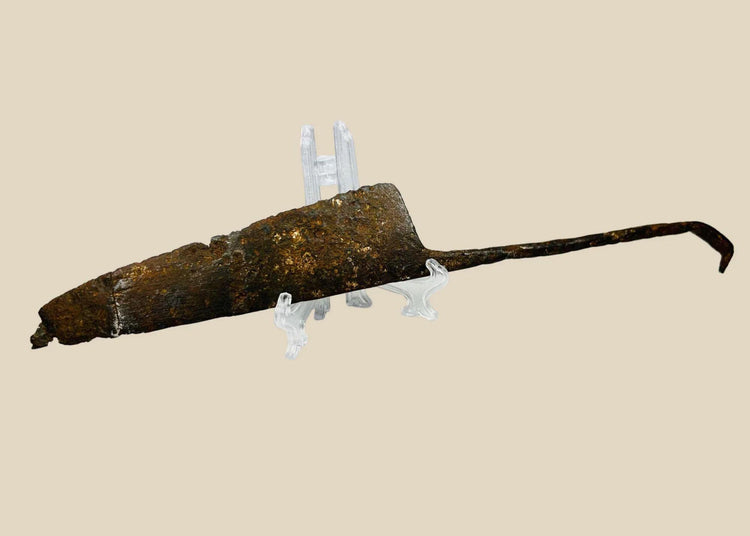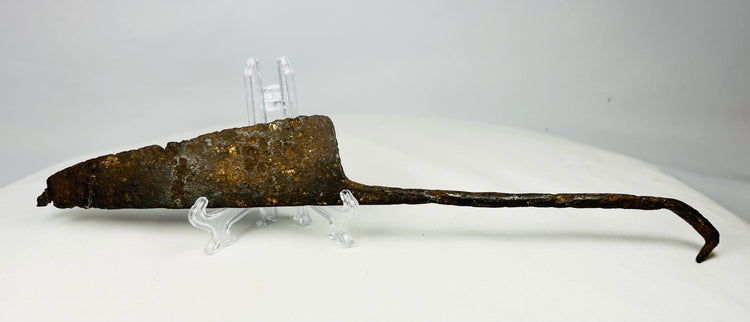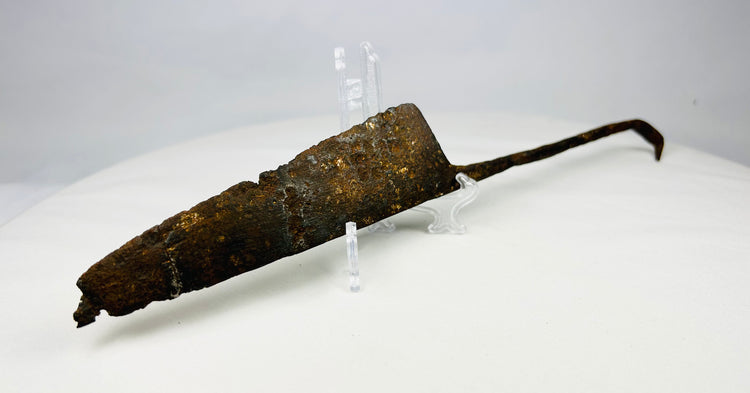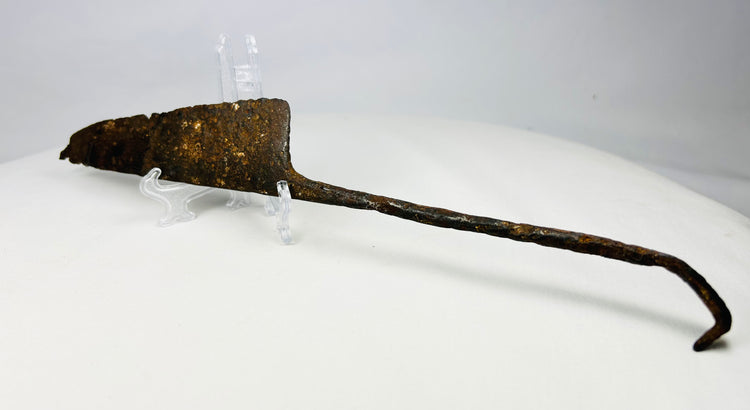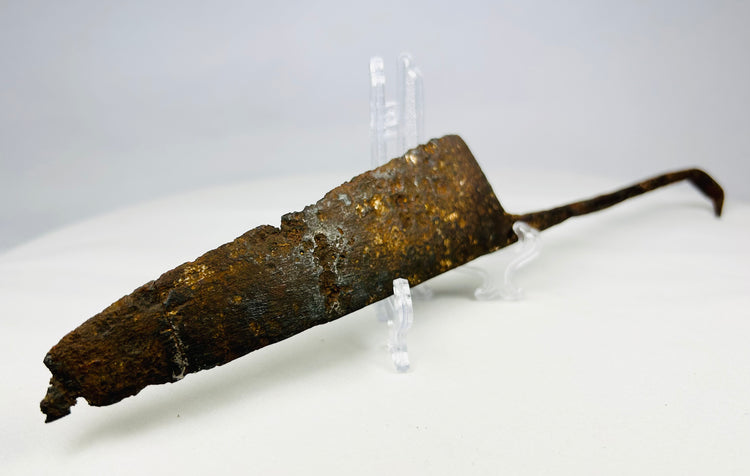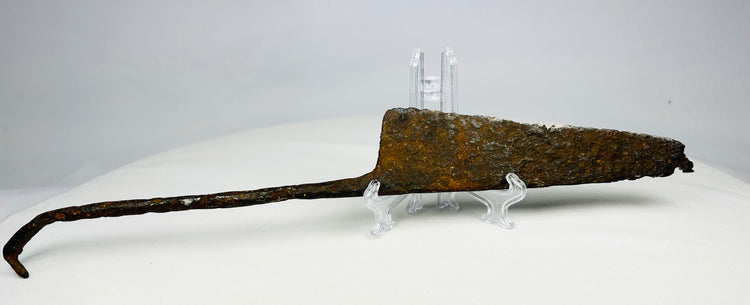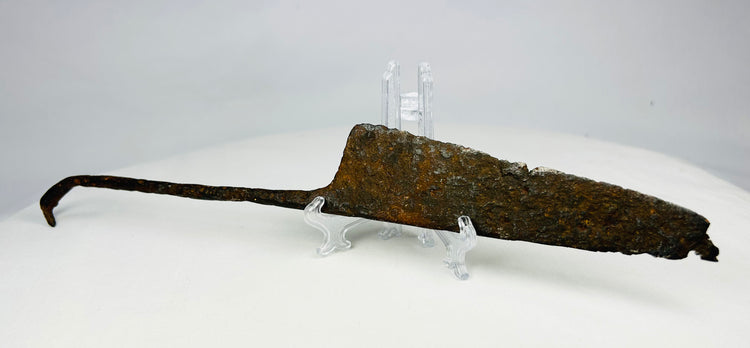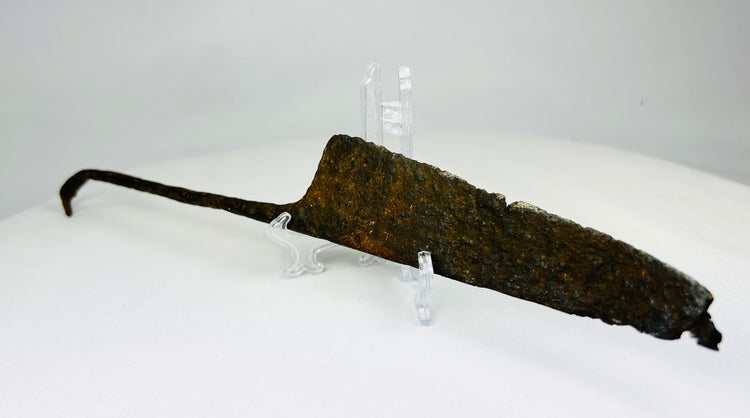Medieval Long Knife | Forged Iron Blade with Tapered Point | Circa 12th–15th Century CE
Description
More
Less
Historical Context & Origin
Region: Likely Central or Western Europe
Material: Forged iron/steel
Period: High to Late Middle Ages (circa 12th–15th century)
Description
This ancient medieval long knife is a rare excavated example of functional weaponry and utility from the Middle Ages. Featuring a wide single-edged blade with a straight spine that tapers elegantly toward the tip, it balances both cutting power and precision. The slender tang extends through the handle and curves slightly at the end, a design that provided stability and balance in both combat and daily use.
Features
- Wide single-edged blade with tapered point for cutting and thrusting
- Full-length tang with curved end for secure grip and durability
- Balanced proportions, making it effective as both tool and weapon
- Excavated condition with visible patina and surface aging
Cultural Significance
The medieval long knife was among the most common sidearms of the period, favored by soldiers, travelers, and commoners alike. Unlike swords, which symbolized wealth and status, the long knife was practical and versatile—used for defense, daily chores, and close combat. Its enduring design reflects the dual role of medieval blades as both utilitarian tools and personal weapons.
Condition
Excavated condition with age-consistent corrosion and patina. Despite surface wear, the blade’s form and tang remain clearly defined, preserving its historical authenticity.
Dimensions
Length: 11.25 in
Age
Circa 12th–15th century CE
Description
Historical Context & Origin
Region: Likely Central or Western Europe
Material: Forged iron/steel
Period: High to Late Middle Ages (circa 12th–15th century)
Description
This ancient medieval long knife is a rare excavated example of functional weaponry and utility from the Middle Ages. Featuring a wide single-edged blade with a straight spine that tapers elegantly toward the tip, it balances both cutting power and precision. The slender tang extends through the handle and curves slightly at the end, a design that provided stability and balance in both combat and daily use.
Features
- Wide single-edged blade with tapered point for cutting and thrusting
- Full-length tang with curved end for secure grip and durability
- Balanced proportions, making it effective as both tool and weapon
- Excavated condition with visible patina and surface aging
Cultural Significance
The medieval long knife was among the most common sidearms of the period, favored by soldiers, travelers, and commoners alike. Unlike swords, which symbolized wealth and status, the long knife was practical and versatile—used for defense, daily chores, and close combat. Its enduring design reflects the dual role of medieval blades as both utilitarian tools and personal weapons.
Condition
Excavated condition with age-consistent corrosion and patina. Despite surface wear, the blade’s form and tang remain clearly defined, preserving its historical authenticity.
Dimensions
Length: 11.25 in
Age
Circa 12th–15th century CE
You May Also Like






















